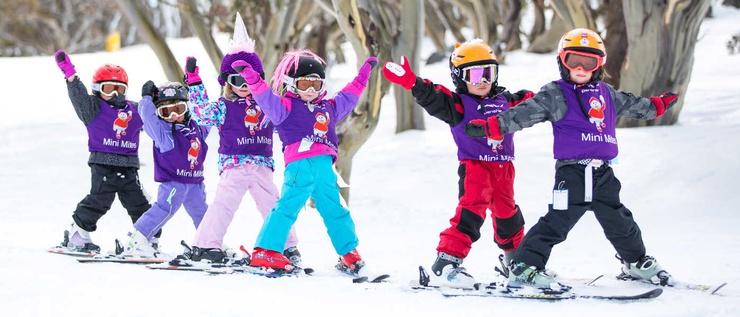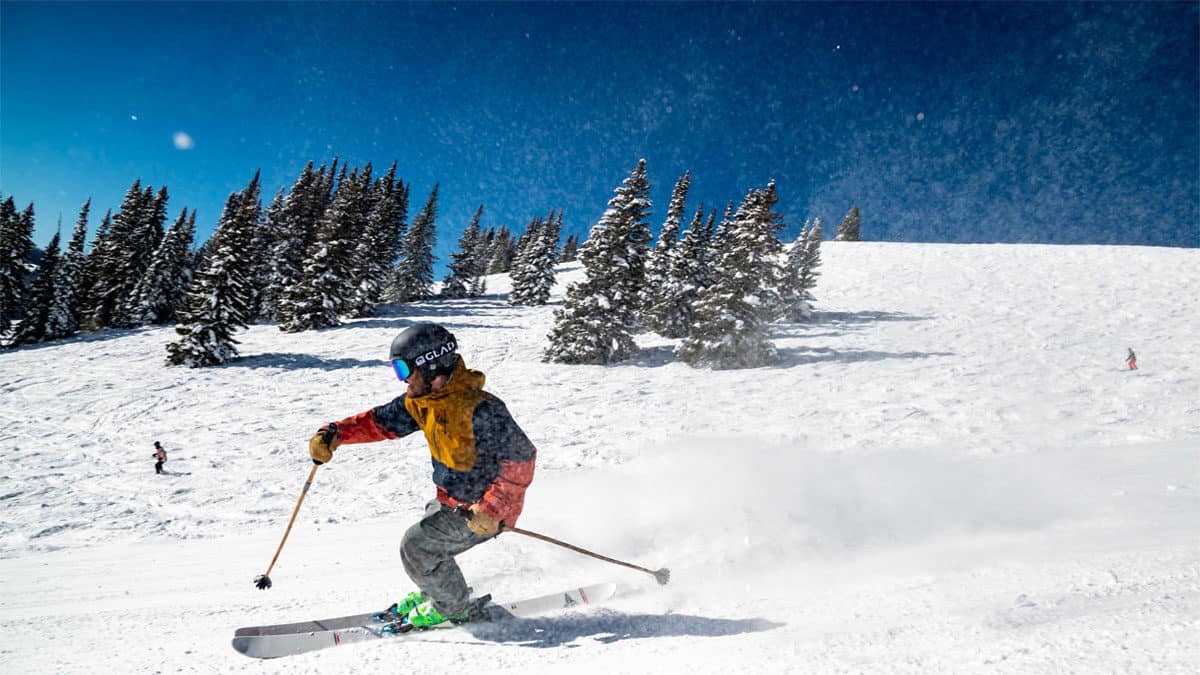What do you do when you arrive at your favorite ski resort, suddenly you look in the rear-view mirror of the car, and wham, there is a baby sitting in his car seat with his wide smile?
This article aims to give a series of TIPS about SKIING with CHILDREN, not about the possibilities offered by one or another ski resort, but a series of useful tips from personal experience and other fans who have had the opportunity to enjoy skiing with their children.
First and foremost, something that is above any advice is that the child must ENJOY and HAVE FUN with SNOW and SKIING.
In the same way that when a child begins his or her education (P3) one of the main objectives of teachers and parents should be that the child goes to school happy, exactly the same should be happy when he or she goes to the snow.
It is that the child does not see the snow as something negative (cold, humidity, wind) but as something positive, to play, have fun and have a good time with their parents or siblings. Our main objective is for them to have fun. This is valid for the youngest children as well as for those who have already started to take their first ski lift.
TIPS:
1.- AGE
There is not an ideal age established in any norm, but that each one will tell us an age, practically since they can walk they could already ski, but there are some “ideal” ages in which several experts coincide;
The 4-5 years would be an age to be able to begin. It also depends on the child, his evolution and the assiduity with which we can go to the snow. It is not the same for a child who resides regularly near a ski resort, because he/she has a second home, or for a child who comes sporadically on weekends or days during the season.
It is an age to start, for the child to make his first steps, to get used to the equipment, the lifts, but without expecting or demanding great progress. Many consider the correct age to be 8-9 years old, only for psychomotor development reasons.
When the child reaches this age, it will be when we will really see progress and we will be able to demand that he/she can take all kinds of lifts and go down all kinds of slopes.
For this reason, some people consider this age to be the ideal age for initiation, but how can we tell a child who lives next to the snow, even if he/she is only 2 years old, that he/she is still small and must wait?
2.- GRADUAL INITIATION
We cannot expect our child, who is barely walking and has not developed many of his psychomotor skills, to put on a pair of skis and begin to negotiate the gates of a slalom.
Skiing can be started at a very early age, but we should not expect them to have the same progression at the age of 4-5 years old as when they are 8-9 years old, nor the one they will have between the ages of 12-14 years old.
At first we must get them to ACQUIRE a series of HABITS. That is why it is not unreasonable that within a few years, even when he starts to walk, we take him to the snow so that he gets used to this environment and to the accessories that are used. used.
At first the snow should be a GAME, he should play with the snow, ride on a sled, make snowmen. With these games, the child will acquire the habits of: putting on a pair of shoes that are more uncomfortable than the shoes he/she usually wears; putting on a pair of pants and an anorak that is uncomfortable and limits his/her movements; always wearing gloves that get in the way; and putting on a hat or sunglasses.
At this early stage, the child gets used to all these “discomforts” for him, and will see them as something normal when he goes with his parents to the snow.
Then gradually, he will start in the SNOW PARK/GARDEN, where he will be able to play and will begin to take his first steps on skis. Here you will get used to helmets, goggles, first ski lifts and instructors.
It will be the ski instructors themselves in charge of the snow garden, who will indicate us or who will directly take the child to a beginners’ slope.
Finally, the child will start on the DEBUTANT slopes. The resorts have slopes with ribbons or “soft” drags for children and beginners to start “skiing for real”.
Here the child will acquire the habit of taking a drag, or later a chair, will learn to keep a tail, they will put on a turtle to protect their back, they will probably wear a bib so that the rest of the skiers can identify them and be careful.
And in some ski resorts they will also wear a bib with a metallic turtle on the back, these are chairlifts with a magnetic fastening system, which is activated when they get on the chairlift and deactivated when they arrive.
Although it is very safe for parents, they do not like it at all, since they are “trapped” in such a way that it almost prevents them from moving on the chairlift and they consider that “that is for babies”.
3.- MATERIALS
Clothes. The children by luck or misfortune grow, therefore their equipment can last us a couple of seasons, not more. It is clear that good technical clothing will give us better results, but if this material is only for a child it will be an excessive expense, and therefore we can pull more economic clothing off some great surface of the sport.
Indicate you some tricks; take at least 2 pairs of gloves, children always end up with frozen and wet hands, because the gloves get wet, so take a couple of sets of gloves, and change them when they are wet; if they wear a helmet, it is advisable to have on hand or a thin hat or a buff, to also cover their head, in case it gets cold.
It would be ideal to carry a spare pair of pants and anorak, as on some occasions their pants may get wet, but they may also have an accident, such as “peeing” in the cafeteria while having their ration of “chocolate”, or in the last curves of the road with the consequent “dizziness”. Protective creams, for lips and skin, in case of sun.
Hard material. The general hard material for skiing, boots, skis and poles, we can acquire, but as we said before, it will be difficult to wear them for more than one or two seasons. Therefore the material can be property, in case of having more than one child since those who follow the first one will inherit their equipment and we will not throw money away.
But lately there is a possibility that it is the seasonal rental, i.e. for a small cost you ensure that the child will wear the boots of their size, skis for their height, and sticks. All the equipment is checked and perfectly waxed soles and edges are polished. They can be picked up in November and returned in May.
In the first place the helmet is essential, besides offering warmth, it will give them protection, many ski schools do not give classes to children if they do not wear a helmet. Secondly the turtle, to protect their back, although it is not indispensable since nobody will demand its use but it is advisable.
4.- MONITORS
They are an essential part of skiing for the little ones. When they are younger and inexperienced, the ski instructor or ski school itself, for a reduced price, will take our child to a snow park.
And only when they already have some experience will the ski instructor take them to a beginners’ slope. As for the duration we can book between 1 to 2 hours of instructor, more in the same day is excessive.
5.- PARENTS
Like the monitors, they are an essential part of the children’s progress. A warning, do not think that because the “child” tells us that he/she has gone down a red run with the instructor, we can leave the beginners’ run and go up to this red run. We do not have the same ability as a teacher or his knowledge. So the first thing is safety and avoid a bad experience that makes the child hate skiing.
We must take into account the state of the snow, a child who can perfectly master the wedge in powder snow, but can have serious problems with hard or icy snow. Therefore it would be convenient that we could examine the slope before, or before taking a lift ask the “posters” for the state of the snow.
The same that we said with the weather is applicable here in terms of caution, if the slope is in bad condition and we force it to lower it, that experience can mark them, so it is better to avoid such situations.
Just because the slope is very difficult does not mean that he/she will learn more. In fact, there is a trend in the world of ski teaching that says that this is negative, in the case of children we are told that it is better a lower level slope where they can develop everything they know and consolidate their technique, than a more difficult slope where they have difficulties to face it.
6.- THE TRIP
Here the advice is applicable not only to skiing, but to any travel. Children sometimes get “dizzy” in the car.
Even some who may be used to going by car, when they get to the mountain roads, or even when they get to the access curves to the ski resort, they can get dizzy. If it is serious, there are pills against motion sickness. There are also elastic wristbands with plastic dots that press on the pulse area and prevent dizziness.
Another solution is to try to go a little slower when we reach the curves and avoid marking the curves with the car. But we will always carry a plastic bag and a cloth or towel to get out of the predicament. And as we have said before, patience, the child will also get used to it.
The distance of the journey is something that is more of a burden for the parents than for the children, there is no problem to choose a destination of several hours, we will only have to stop maybe more for them, but it is something that is not different from any other type of journey and it is not different for skiing.
7.- CONCLUSIONS
Skiing is the ideal sport to practice with the family. My personal advice is that the child should have fun and not be overwhelmed.
Not to be in a hurry in that it progresses quickly, for the frequency that we go to ski we cannot expect that in two days they learn, but at the moment with the techniques and the material, the children learn much more quickly.


